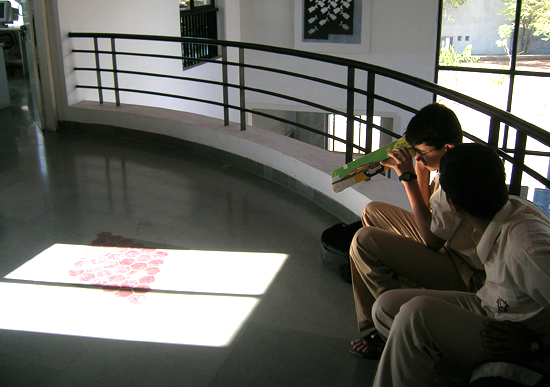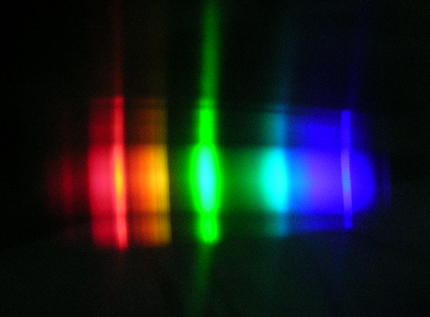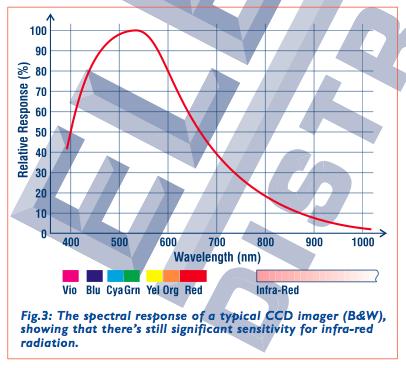OK, possible dumb question: can we use a prism or a stripped CD to split some light reflected off an object or material, and photograph its spectrum with an off-the-shelf digital camera? Above, spectral response of a typical CCD as we might find in a digicam. Below, the range of infrared used in IR spectroscopy
The infrared spectrum for a molecule in a graphical display. It shows the frequencies of IR radiation absorbed and the % of the incident light that passes through the molecule without being absorbed. The spectrum has two regions. The fingerprint region is unique for a molecule and the functional group region is similar for molecules with the same functional groups.
Well, these folks at The Inter-University Centre for Astronomy and Astrophysics, Pune, India did it with a pizza box:


But what about the infrared range? I’m concerned about this statement, from the first link above:
…the colour filter stripes tend to reduce the imager sensitivity to IR wavelengths. However some colour cameras still have a significant sensitivity to IR, especially if they’ve been designed to be sensitive down to very low light levels.

3 thoughts on “Typical CCD spectral response vs. IR spectrography”
Comments are closed.